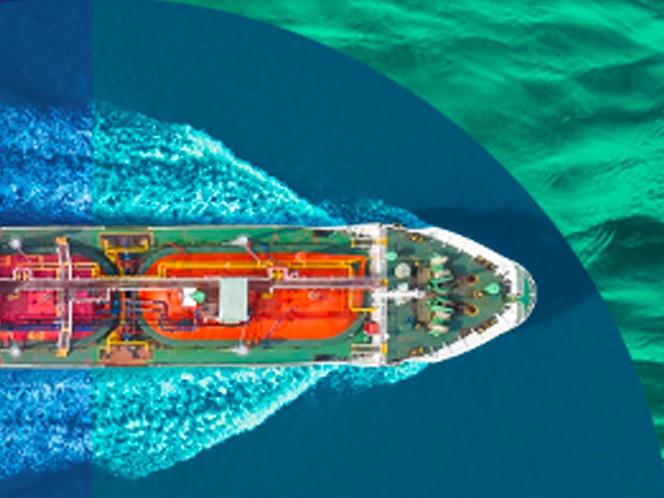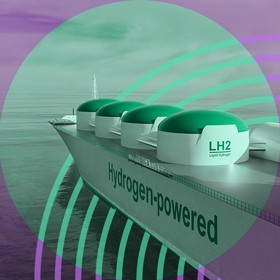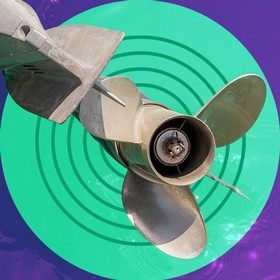Decarbonizing shipping: Net-zero by 2050?
Posted: June 25, 2024

Though it’s one of the most energy-efficient modes of transport, international maritime shipping contributes about 3% of all carbon emissions. That’s largely because there’s just so much of it. Ninety percent of trade passes over the ocean—and the total volume of such goods is expected to triple in the next 25 years.
The International Maritime Organization (IMO) aspires to reduce greenhouse gas emissions from international shipping to net-zero by sometime around 2050. To meet that goal, the industry will have to reduce emissions to 15% of 2022 levels by 2030. So far, progress is not promising: international shipping emissions increased by 5% in 2022.
Transitioning to zero-carbon fuels is a particularly heavy lift for the shipping industry. So, while it works on the fuel transition, the industry is relying on engineering and data innovations to make its operations more efficient.
Our Industrial Life
Get your bi-weekly newsletter sharing fresh perspectives on complicated issues, new technology, and open questions shaping our industrial world.
Problems with alternative fuels

There are many alternative fuels that could help decarbonize shipping. Some ships already run on low-carbon options, such as liquified natural gas (LNG), liquified petroleum gas (LPG) and methanol. Zero-carbon options, including green hydrogen, green ammonia and green methanol, are also in the works, and the China Ocean Shipping Group (Cosco), recently launched the world’s largest battery-operated ship, which it expects to save 8,600 pounds (2,900kg) of fuel every 100 nautical miles.
But, fewer than one percent of ships currently in operation use any of these alternative fuels. Of ships currently on order, 15.56% are designed for alternative fuels—though the vast majority of those are for low-carbon fuels and not the zero-carbon options.
The main impediment to building ships that use no-carbon fuels is that those fuels are still in nascent stages of development. So, shipbuilders don’t know yet which fuels will:
- Ultimately prove viable as ship propulsion
- Build out global networks of refueling (“bunkering,” in the maritime argot) stations
- Produce a steady supply
- Prove cost-effective
Because ships take two to three years to build and last several decades, shipbuilders are reluctant to invest in vessels designed for any of these alternative fuels until they can settle these questions. On the flip side, alternative fuel suppliers are reluctant to build an infrastructure for ship refueling without a fleet ready to take advantage of it.
Innovative power-saving engineering

In the meantime, shipbuilders are deploying a number of engineering innovations that make ships more energy efficient, whichever fuel they end up using.
Ships are once again embracing wind power. New wind propulsion technology can reduce power demands by 20-63% and can meet up to 80% of the energy requirements of some modern ships.
Modern wind propulsion goes beyond old-school cloth sails to include:
- Flettner roters—vertical rotating cylinders powered by onboard electricity. Their rotation creates forward thrust when exposed to wind due to the physical phenomenon called the “Magnus effect.”
- Wing sails—Airfoils that operate on the same principles as aircraft wings. On ships, they’re mounted vertically so that the aerodynamic lift propels the ship forward rather than up. Modern sails are digitally automated to adjust in real-time in light of anemometer readings, optimizing their propulsion as weather conditions change.
- Towing kites—Large paragliders that fly above and to the side of the ship on a rope attached to an electric-hydraulic winch. They too adjust fully automatically to changes in wind speed and direction, requiring crew intervention only to stow and deploy it. Because the kites fly in a figure eight and at heights where the wind speed is double that at sea level, they can generate 100 tons of traction on just a small surface area.
Wind propulsion is most effective when it’s installed along with a fully automated voyage optimization system that takes into account real-time wind conditions and weather forecasts to plan and update the vessel’s route to optimize either fuel efficiency or ETA.
Digital automation is also helping ships that still use conventional fuel optimize the efficiency of their engines, hydrodynamics, and overall power use. At the same time, engineers are both retrofitting existing ships as well as equipping new ones with hull and propeller designs that minimize energy use.
In the end, though, wind power and digital optimization can only take shipping so far. To get to net-zero by 2050, the industry will have to build out the infrastructure for a fleet powered by no-carbon fuels like green ammonia or renewables-powered batteries.